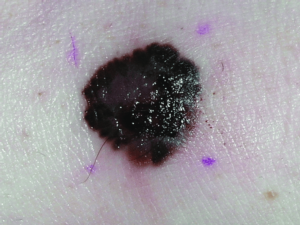Since the human genome project completed in 2003, our understanding of our own DNA has moved at a remarkable pace.
As with other medical areas, the study of genetic influences on skin conditions has focused on European skin types, although this is changing.
An international team published a study in mid 2021, based on over 6000 Central and South American volunteers. A good geographical location to find a mix of European, Native American and African ancestry.
They discovered that gene variants associated with wrinkling and wider ageing in Europeans had a similar role in other ethnic groups. New genetic associations were found, which influence mole count and melanoma risk across differing skin types.
The degree to which pigmentation serves as a protective agent is also being studied, along with the genetic reasons this occurs. A range of pigmentation gene sets have been discovered in Asian, European and African populations.
Mapping Subtle Variations
Taking care not to over differentiate is important, as variations in populations are nominal. In a human genome consisting of over 20,000 genes, blue-brown eye colour can be explained by a single genetic change.
Even so, understanding subtle patterns which influence skin formation on different continents, or across continents will be an asset. For all forms of diagnosis, or treatment and for genetic analysis, as this becomes more embedded.
The genetic testing we use to determine risk of melanoma is accurate across populations but further research on skin types could improve this. An avenue into a critical area, where risk tendency and early diagnosis matter.
As the cost of testing falls, more data should become available in all regions. An opportunity for collaboration which can enhance the understanding of small variations.
Shared But Different
Few skin conditions are unique to one part of our population but they can manifest in different ways. Acne is common across skin colours but post-inflammatory hyperpigmentation is more likely to leave long term issues on dark skin.
The same can arise from trauma, insect bites or burns, leaving healed skin darker in colour. Keloids can be a further cause of unwanted, visible signs following injury, essentially an over production of scar tissue.
A loss of pigment caused by vitiligo is again common across skin types but more noticeable on darker skin. Similar thoughts apply to melasma, or ashy skin, the outcome is seen and felt in different ways.
There are conditions which are more or less unique to dark skin. Pityriasis alba can bring scaly patches, dermatosis papulosa nigra is responsible for quite common raised growths, which appear from adolescence onwards.
Most skin diseases are however ethnically shared, the key need is accurate diagnosis and individually managed treatment. Appreciating genetic differences in skin types and for each person will assist with this.
Individual Support
The basis of good diagnosis should be experience and an ability to understand a person’s skin, whatever their ethnic background. Otherwise, conditions which are more difficult to identify on darker skin can be missed.
Genetic analysis is not meant to replace the skills of a consultant but can add to their understanding. The large datasets this will eventually build can also help with awareness across the medical profession and in the community.
Equally, genetic skin differences can be as individual as fingerprints, allowing us to treat individuals as they should be. The future of dermatology for darker skin will be about treating your unique design.



